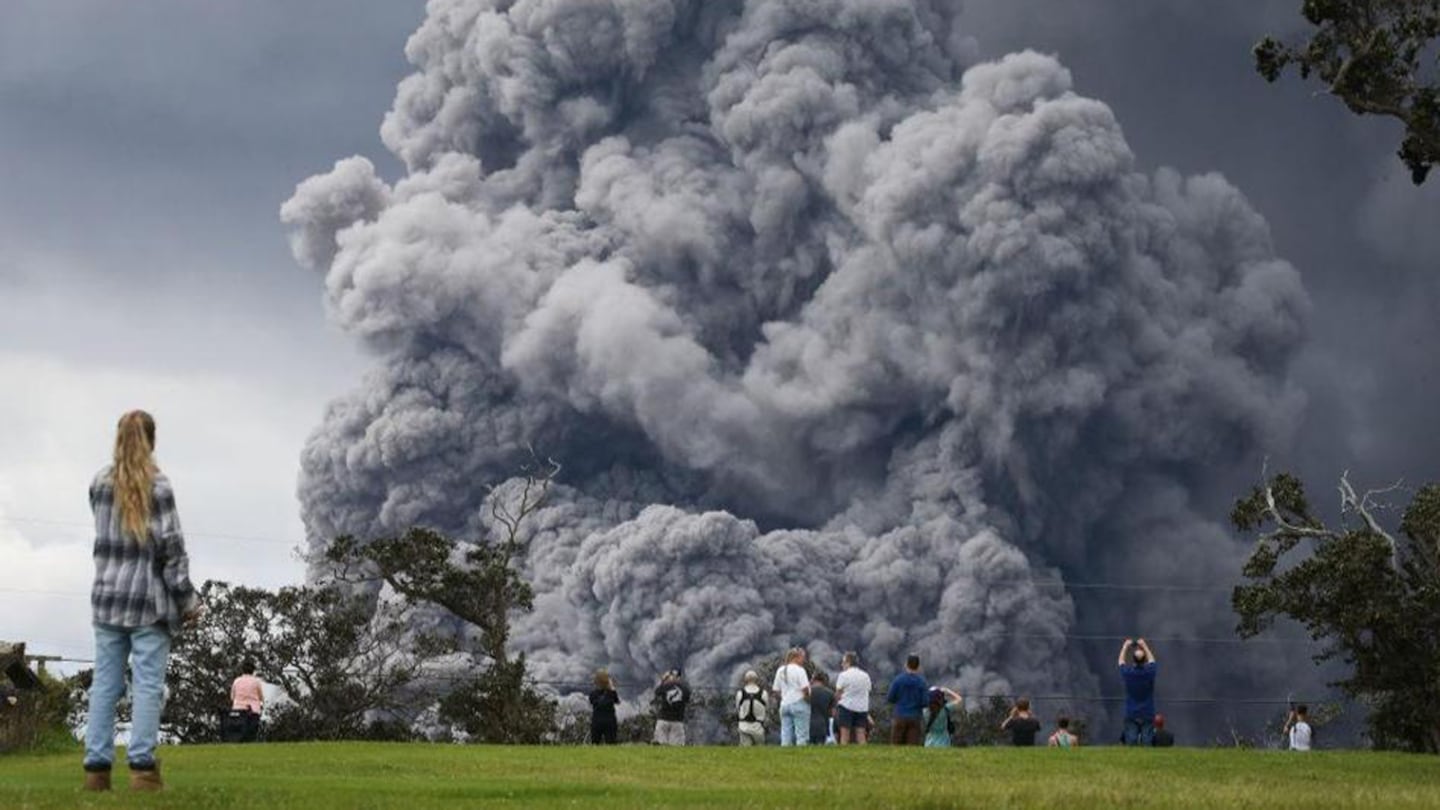The U.S. Geological Survey has raised the alert for Hawaii's Kilauea volcano from an orange to a red warning.
Ash eruption at the volcano's summit increased in intensity Tuesday, with an ash cloud spewing as high as 12,000 feet above sea level, according to the USGS.
TRENDING NOW:
- Police looking at Aliquippa woman's murder as 'crime of passion' or 'jealousy'
- Co-pilot sucked halfway out of Sichuan Airlines cockpit window
- Severe thunderstorm watch for viewing area
- VIDEO: Hundreds of illegal dump sites found across Allegheny County
Ashfall and air pollution associated with a volcanic eruption have been reported as far as 18 miles downwind of Kilauea in Pahala.
Summary of #HVO #Kilauea VAN/VONA: Ash eruption at summit has increased in intensity. NWS radar & pilot reports show top of the ash cloud is as high as 10,000-12,000 feet above sea level. Ashfall and vog has been reported in Pahala (18 mi downwind). #KilaueaErupts pic.twitter.com/ChzRdu0Ch7
— USGS Volcanoes🌋 (@USGSVolcanoes) May 15, 2018
A red warning means a "major volcanic eruption is imminent, underway or suspected with hazardous activity both on the ground and in the air," the USGS said.
"At any time, activity may become more explosive, increasing the intensity of ash production and producing ballistic projectiles near the vent," the agency tweeted.
USGS declares "Red/Warning" for Hawaii's Kilauea Volcano.https://t.co/7SkX0paOQx
— Breaking News (@BreakingNews) May 15, 2018
"At any time, activity may become more explosive, increasing the intensity of ash production and producing ballistic projectiles near the vent."
The eruption on Kilauea began more than a week ago and has forced thousands of people from their homes, destroyed nearly 40 structures, including dozens of homes, and created 18 fissures in the ground surrounding the volcano.
Lava has inundated almost 120 acres and damaged 50 utility poles.
Hawaii authorities are warning residents in areas around the volcano to be prepared to evacuate with little or no advanced warning.
At Kīlauea’s summit, occasional rockfalls into the deep vent produce intermittent pulses of vigorous ash emissions. https://t.co/O6vwp9vC9B pic.twitter.com/mR3qJw4RuN
— USGS Volcanoes🌋 (@USGSVolcanoes) May 15, 2018
Cox Media Group






